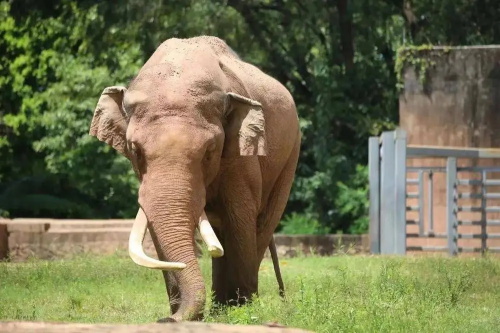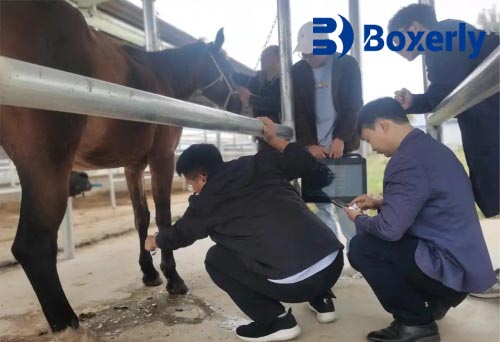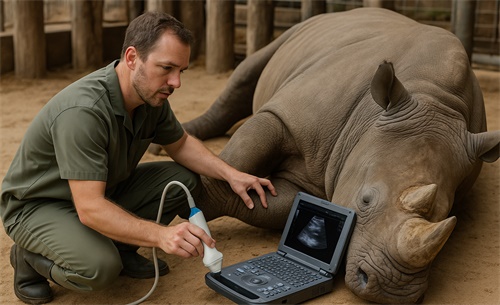Maintaining the health and wellbeing of mammals in modern zoos requires a comprehensive and proactive approach. Zoo animals—particularly large mammals such as elephants, giraffes, rhinos, and big cats—face unique challenges due to their size, dietary needs, social behavior, and limited natural range in captivity. Regular health monitoring is essential to ensure not only their individual welfare but also the overall integrity of zoo conservation programs.

This article outlines a practical, non-invasive, and scalable solution for conducting routine physical assessments of zoo mammals. The methodology combines clinical best practices, advanced imaging tools, and behavioral management to ensure the safety of both animals and caretakers.
Why Health Monitoring Matters in Zoos
Unlike farm animals, zoo mammals often have longer lifespans and more complex biological needs. Many are also endangered species, meaning every individual has significant conservation value. Unnoticed medical issues—such as reproductive problems, organ dysfunction, or musculoskeletal disorders—can quickly escalate without early intervention. Preventative diagnostics are therefore critical, particularly for:
Elderly animals with declining organ function.
Pregnant females and breeding males in captive breeding programs.
Animals recently relocated or introduced to new enclosures.
Species with genetic predispositions to certain diseases (e.g., cardiomyopathy in gorillas).
Core Components of a Zoo Mammal Health Check Program
Behavioral Conditioning for Voluntary Participation
Modern zoos increasingly rely on positive reinforcement training to enable voluntary participation in medical procedures. Animals are taught to present body parts—such as limbs, trunks, abdomens, or tails—for examination. This minimizes stress and eliminates the need for sedation in many cases. Trainers work closely with veterinarians to create training plans tailored to species and individual behavior profiles.
Routine Visual and Physical Examinations
Caretakers perform daily visual checks to observe posture, gait, appetite, and social interaction. However, deeper assessments must be conducted by trained veterinarians who examine:
Skin and fur for wounds or parasites
Eyes, ears, nose, and mouth for infection
Teeth and tusks for wear or disease
Hoof and foot condition, especially in elephants and ungulates
Diagnostic Imaging: Ultrasound, Radiography, Endoscopy
Non-invasive imaging tools are critical to assess internal conditions. Portable ultrasound machines designed for large animals enable rapid scanning of organs such as the heart, liver, kidneys, and reproductive system. These devices are now compact, mobile, and rugged—ideal for use in the field or within enclosures. One reputable manufacturer of such equipment is BXL, known for their specialized ultrasound systems for large veterinary patients.

Radiography (X-ray) is especially useful for bone assessments in animals prone to arthritis or injury. Endoscopy is employed when visualizing the digestive or respiratory tracts is necessary.
Bloodwork and Laboratory Diagnostics
Blood sampling is a routine part of zoo health care. Analysis provides insights into red and white cell counts, organ function markers (e.g., ALT, AST, creatinine), hormonal status, and signs of infection or inflammation. For species with accessible veins—like primates or trained elephants—venipuncture is straightforward. For others, such as big cats or antelope, it may require restraint or anesthesia.
Reproductive Monitoring
Breeding programs depend on careful monitoring of reproductive health. For females, ultrasonography can confirm pregnancies early and track fetal development. For males, testicular examinations and hormonal assays support breeding soundness evaluations. In some species, cycle tracking via fecal hormone analysis is used in tandem with ultrasound data.
Longitudinal Data and Health Records
Zoo software platforms are increasingly used to track each animal’s health history, treatment records, and lab results. This digital continuity enables better detection of long-term trends, such as chronic disease or gradual behavioral change. Integrating imaging data, blood panels, and training notes into a unified record ensures the veterinary team has a complete view of an animal’s well-being.

Conclusion
A robust health monitoring protocol for zoo mammals combines regular physical assessments, advanced diagnostic imaging, behavioral training, and detailed recordkeeping. These efforts not only improve the quality of life for animals in human care but also support broader conservation and education missions. As imaging technologies become more accessible—thanks in part to dedicated manufacturers of large-animal veterinary equipment—zoo veterinarians are better equipped than ever to deliver top-tier care with minimal stress to their patients.
tags:


